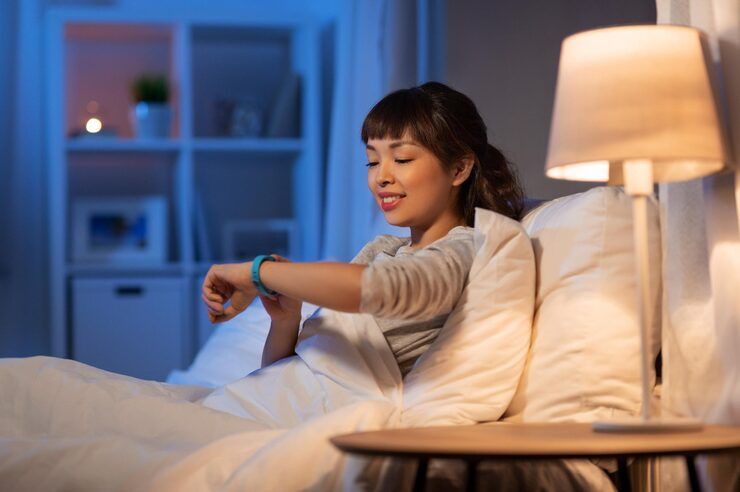Explore How Smart Wearables Are Revolutionizing Insomnia Treatment: A Complete Guide
Smart wearables—such as sleep trackers, smartwatches, and health-monitoring headbands—are increasingly being used to monitor, analyze, and improve sleep quality. These devices can track sleep stages, detect disturbances, and suggest personalized interventions for better rest.
Insomnia, a condition affecting the ability to fall asleep or stay asleep, impacts millions worldwide. Traditional treatments include medication, therapy, and lifestyle changes. Smart wearables complement these approaches by offering continuous, non-invasive monitoring and real-time feedback, making sleep health more accessible and measurable.

Why smart wearables for insomnia treatment matter today
Sleep disorders are on the rise, often linked to stress, screen exposure, and lifestyle factors. According to the World Sleep Society, up to 45% of the global population may be affected by poor sleep quality.
Smart wearables matter because they:
-
Help users identify patterns that contribute to insomnia.
-
Offer data-driven insights for doctors and therapists.
-
Encourage healthier sleep habits through reminders and feedback.
-
Reduce the need for costly or invasive sleep studies.
-
Empower individuals to monitor progress over time.
Who benefits the most:
-
People with mild to moderate insomnia.
-
Those seeking non-drug interventions.
-
Individuals undergoing therapy who need tracking tools.
-
Athletes and professionals needing optimized rest for performance.
Recent updates in smart wearable technology for sleep (2024–2025)
Smart wearable technology for insomnia treatment has evolved rapidly in the past year:
| Date | Update | Impact |
|---|---|---|
| March 2024 | FDA approved a new headband device with real-time EEG monitoring for home use. | Brought clinical-level accuracy to consumer wearables. |
| July 2024 | Apple Watch introduced advanced sleep apnea detection in watchOS 11. | Expanded the role of wearables in detecting related sleep disorders. |
| October 2024 | Fitbit rolled out AI-powered sleep coaching based on biometric data. | Enabled personalized sleep improvement plans. |
| January 2025 | Oura Ring partnered with healthcare providers for insurance-covered sleep monitoring programs. | Increased access to wearable-based treatment tools. |
These updates reflect a move towards medical-grade accuracy, AI integration, and healthcare collaboration.
Laws and policies affecting wearable use for insomnia treatment
Regulations surrounding wearable devices vary depending on their intended use and the region:
-
United States: The FDA regulates medical-grade devices that claim to diagnose or treat conditions. Wearables marketed for "wellness" purposes face fewer restrictions.
-
European Union: Devices must comply with the Medical Device Regulation (MDR) if they provide diagnostic or treatment functions.
-
Asia-Pacific: Countries like Japan and South Korea have specific medical device certifications for sleep monitoring products.
-
Data Privacy Laws: GDPR (EU), HIPAA (USA), and similar frameworks require secure handling of health-related data collected by wearables.
Users and providers should ensure compliance with both medical and data protection standards.
Tools and resources for using smart wearables in insomnia management
Popular Smart Wearables for Sleep Tracking:
-
Oura Ring – Advanced sleep stage monitoring, readiness scores.
-
Fitbit Sense 2 – Sleep score, snore detection, guided breathing.
-
Apple Watch Series 9 – Sleep stage tracking, environmental noise alerts.
-
Withings Sleep Analyzer – Bedside mat with breathing disturbance detection.
-
Muse S (Gen 2) – EEG-based relaxation and sleep induction guidance.
Supporting Apps and Platforms:
-
Sleep Cycle (sleep phase alarm and analysis)
-
Calm (guided meditation for better sleep)
-
Headspace (sleep-focused audio content)
-
Sleepio (CBT-I based sleep improvement program)
Additional Resources:
-
National Sleep Foundation (educational guides)
-
World Sleep Society (sleep health awareness campaigns)
-
Online CBT-I programs (clinically validated behavioral therapy for insomnia)
Frequently Asked Questions
1. Can smart wearables cure insomnia?
No, wearables do not cure insomnia but help monitor sleep patterns and support behavioral changes that may improve sleep over time.
2. Are wearable sleep trackers accurate?
Consumer-grade devices can estimate sleep patterns with reasonable accuracy, but medical-grade wearables provide more precise data. They should be used as a complement to professional evaluation.
3. Do I need a prescription for wearable sleep devices?
Most consumer-grade devices are available without a prescription. Medical-grade wearables with diagnostic capabilities may require approval from a healthcare provider.
4. How long does it take to see improvements in sleep with a wearable?
Results vary—some people notice changes in a few weeks, while others may take several months, depending on adherence to recommendations and underlying causes.
5. Is my sleep data private?
Most reputable brands encrypt data, but privacy policies vary. Always review terms of service and opt for devices that comply with regional data protection laws.
Summary table: Benefits and considerations of smart wearables for insomnia
| Aspect | Benefits | Considerations |
|---|---|---|
| Monitoring | Tracks sleep duration, stages, disturbances | Accuracy may vary by device |
| Guidance | Offers personalized tips and reminders | Recommendations may not replace medical advice |
| Convenience | Non-invasive, can be worn nightly | May cause discomfort for some users |
| Data Access | Long-term sleep history for self or doctor | Requires compatible apps and sometimes subscriptions |
Final thoughts
Smart wearables have brought a new dimension to insomnia management by combining technology, health monitoring, and user engagement. While they are not a standalone cure, they can be valuable tools for identifying sleep issues, tracking progress, and supporting lifestyle changes.
As technology advances and more devices gain medical certification, their role in clinical and personal sleep care is expected to grow. Pairing wearable insights with professional guidance remains the most effective way to address insomnia.
